|
When it became clear that COVID-19 was coming to American shores, some of the first things to be cancelled were large entertainment events. A few weeks before tens of millions of Americans were unemployed across most sectors of the economy, some of the first few thousands suddenly without work were our nations’ performing artists. The early days of the crisis prompted my article about the short-term financial impact of COVID-19 on the finances of a performing artist. This article has been shared hundreds of times and has more than 15,000 page views – not a lot in the grand scheme of the internet, but staggering for a small non-profit arts organization like ours. Now, as the nation begins to contemplate how we might emerge from over a month of traumatic lockdowns, it is looking likely that the impact on live performing arts may be severe for a much longer time. Just as the concerts, plays, musicals, and operas were among the first things to be cancelled, these “non-essential” gatherings (they feel quite essential to the professionals who create them!), often reliant on large numbers of people, many in older age groups, will be among the last to return. We all hope for a vaccine to be developed in record time, or for a quick breakthrough in clinical treatments for COVID-19. But, the timing of these developments is unknown and completely out of our control. In a survey of our Skylark artists, the most common response for when concerts are likely to resume (economically, with an audience) was “sometime in the first half of 2021.” Many think that it could be later. How do we plan in such a time of jarring uncertainty? What happens if large audiences are afraid to return until we have successfully developed a vaccine? If the foundation of performing arts organizations is built on live performance, what are our options if large audiences are nearly impossible to assemble? If we assume that the strategy “hope for the best, wait and see, cancel, beg for money, rinse, repeat” is not a great plan, I think performing arts organizations have only two basic options:
Neither of these options is easy. The first option is terribly sad for our audiences, and is fraught with acute pain for artists and staff in the form of furloughs and cancelled projects. The second path is exceedingly difficult and requires great flexibility and adaptation. At Skylark, we’re hoping to find a way to make the innovative path a reality. Our upended economic modelIt may be helpful to understand how Skylark’s economic model works. Skylark brings together world-class professional musicians to perform beautiful concerts on a project basis throughout our season. Our artists are at the top of their field, and Skylark is gaining increased recognition as one of the most exciting classical vocal ensembles in the United States (a recent album earned two GRAMMY® nominations). Next season, we have plans for eight projects bringing together a roster of over 20 musicians for a diverse series of concerts in the Greater Boston area. It is our most ambitious season yet, and has been in the planning for over eight months. Our artists were sent contracts back in December of 2019 for all of this work, and they have been relying on this income for next year. By far, the biggest portion of our budget (nearly 50%) is allocated to compensating our artists. The rest is made up of other project costs, marketing, recording, and some modest overhead expenses. Our revenue comes from two sources: Earned revenue: Money from season tickets, individual concert tickets, and presentation fees when we perform for large concert series Donated revenue: Tax-free donations from our subscribers and supporters Here is a snapshot of our budget before COVID-19: Our economic model is similar to many other organizations, with a few exceptions – first, we have a large percentage of earned revenue (in general, 50%+ is very good for a classical music organization), and we have very low overhead (we have a very small staff and no large fixed expenses like a building or theatre to maintain). What happens to this economic model if we are unable to present concerts for the entire season? First. our earned revenue will go to nearly $0. We might still manage a few thousand dollars of recording sales, but these will be paltry in the world of Spotify and Apple Music. Here’s that adjustment to our budget: Further, what happens to donated revenue in a time when concerts can’t take place? While we have no way of knowing for certain, I suspect it is not good. I know that many of our donors will continue supporting Skylark because they love our group and want our work to continue. However, with the stock market significantly down and unemployment through the roof, many of our supporters are facing financial troubles of their own. I would wager that a 30% reduction in donated revenue compared to our previous year would be a good scenario, and there are certainly worse scenarios that I can imagine. With those adjustments to a potential new reality, our total expected revenue drops a whopping 76%: On the upside, we will incur fewer costs! (?) Presumably travel costs would drop to zero, and we would have no need to spend money to market concerts that are not happening. However, we would still have a contractual and moral obligation to our singers. And while we certainly can invoke force majeure given the external forces at play, that doesn’t help our singers pay their bills or help us feel like good stewards of Skylark’s mission. What if we simply reduced our overhead as much as possible and turned Skylark into a charity that passed donations directly onto our singers? Our artists would see their Skylark income drop at least 60%. That is, if our donors did not get extremely fatigued being asked to support Skylark in a time when there are so many important charitable causes that need support. I’m not sure this would be true, and I suspect donations would drop even further. No one would feel good about this solution – not our artists, not our audiences, and not our donors. What else is there? Designing an interim model To think about a new solution, we had to think about what makes Skylark special to our subscribers and ticket buyers. We think it comes down to three things:
While it is certainly easier to do these things in a world built around live concerts, I don’t think it is impossible to do these things in the digital world, especially with the technology available today, and especially if we are engaging with the people who are already actively involved in the Skylark community. We thought about how to create a meaningful online community to serve these goals and came up with our concept for Skylark +. Here’s the video we created to launch the idea to our audience: After launching Skylark + this weekend, we have had an immediate positive response that has given us great optimism that this can and will work. I believe most of our fans and supporters will want to be a part of this new community and will understand it is the best we can do until we are together again in person. We aren’t experts at this yet. I’m sure navigating the technology in the early days will be frustrating. We will make mistakes. Over time, we will get better at creating videos and delivering digital content. We will develop even better ideas for engagement with our audiences. But, for the first time in six weeks, it feels like we have a way forward and a productive place to focus our artistic energy. The budget What could our budget look like in this new world? It is tempting to think that a digital model opens up the entire world to joining our online community. While this is technically true, the people who are likely to be first adopters are those who are already engaged supporters and attendees of Skylark. Last season, we had 330 subscribers in the Boston area. We had about 2,000 individual tickets buyers. We have an email list of ~2,300 people 3,000+ Facebook followers, ~1K Instagram followers, and about ~1K Spotify listeners in an average month. I think about the potential audiences as concentric circles around Skylark: Although anyone could join Skylark +, the likelihood is much higher in the closest circle of fans. I would wager we might convince 90% of these fans to subscribe (last year, our retention rate of subscribers was 99%!). Of the concert fans, I think we could aim for 1 in 5 attendees to join. Digital-only fans will be much less likely to pay for content, but perhaps 1 in 20 would subscribe. For the broader digital world, I think we might pick up a few subscribers, but it seems like a hard sell. Here’s what that looks like: If this were to be successful, we could realistically gain ~700-750 subscribers to Skylark + without having to recruit many subscribers from the broader community. If we retained these subscribers for a full season, we could even break even on a new digital season (with a lower budget for marketing, travel, and project costs) while reaching our original budget for artist compensation: It is still too early to know if these goals are realistic, but we are very excited to start down this road before a vaccine is developed. Even if live performance can’t happen for over a year, there could still be a way to take care of our artists, connect with our audiences, and create joy in the world.
As soon as we are able to plan concerts, we will be thrilled to do so. But, in the interim, we have an energizing new goal to pursue. And, we may even find that our digital community is something that people love and that we want to continue building for many years after COVID-19 is a blessedly distant memory.
2 Comments
Florence (Sunny) Davidson
5/1/2020 03:52:08 pm
Matthew, you are more than one kind of genius. First, the idea as elaborated. Second, the emotion, as rich as enthusiasm in music.
Reply
Leave a Reply. |
AuthorMatthew Guard Archives
April 2020
Categories |
©2023, Skylark Vocal Ensemble Inc.
8735 Dunwoody Place, STE R, Atlanta, GA 30350
617-245-4958
8735 Dunwoody Place, STE R, Atlanta, GA 30350
617-245-4958

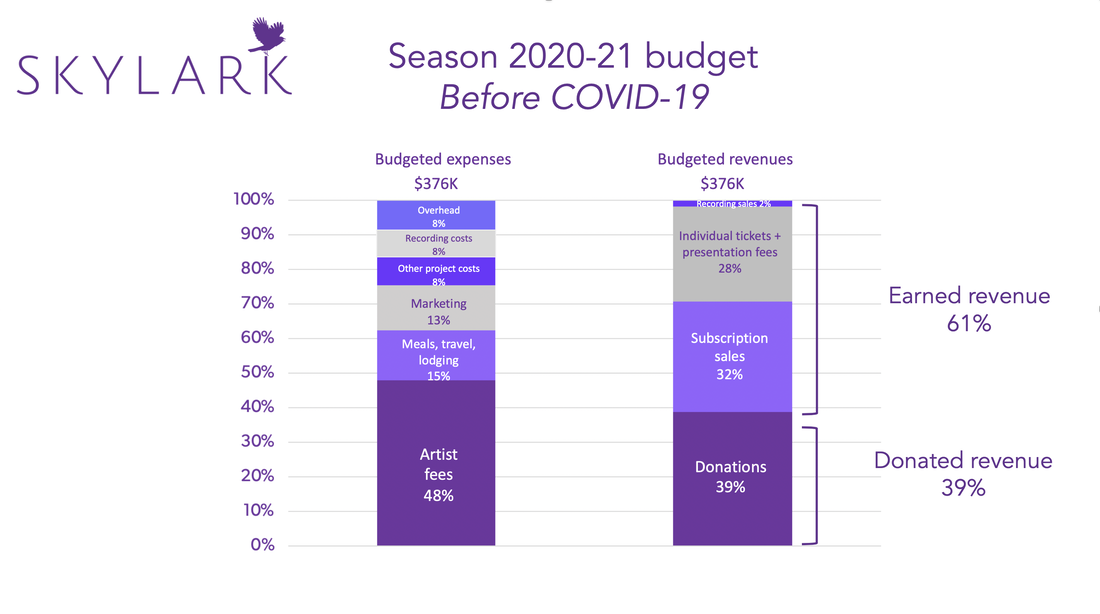
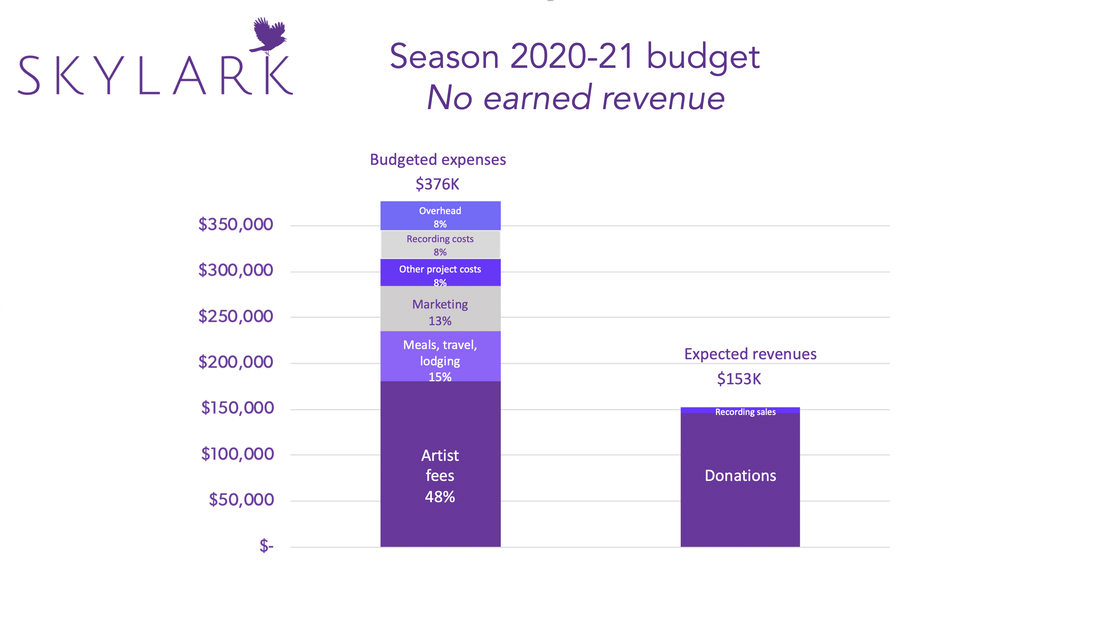
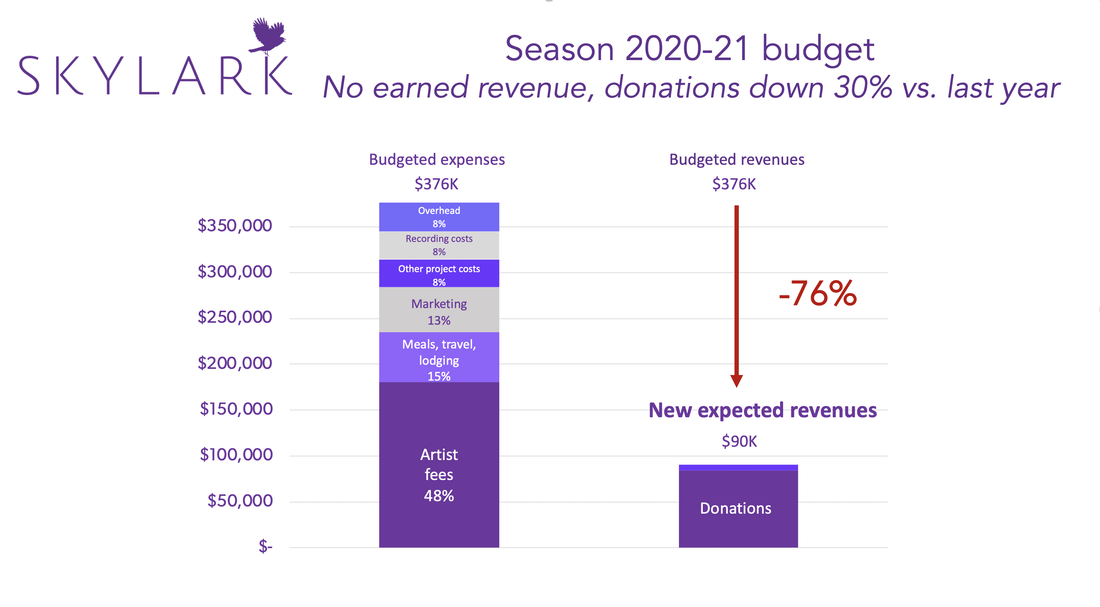
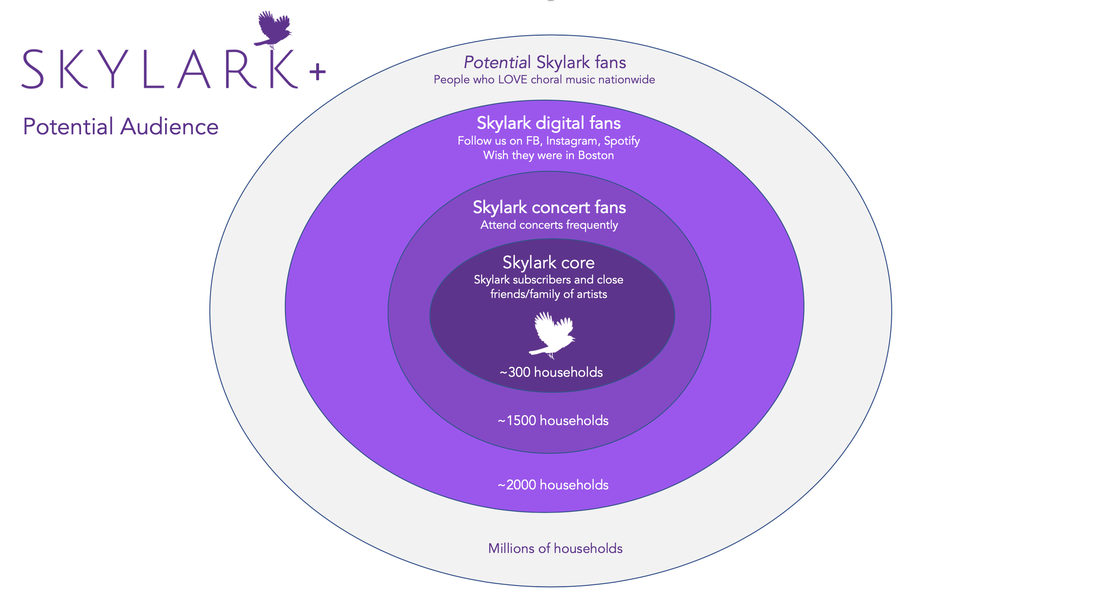
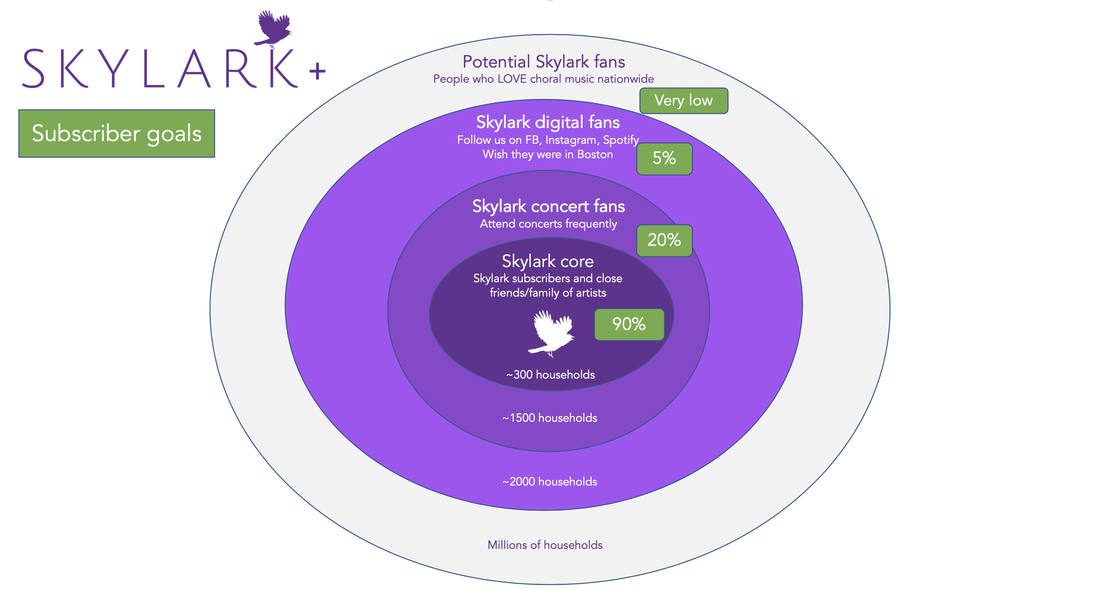
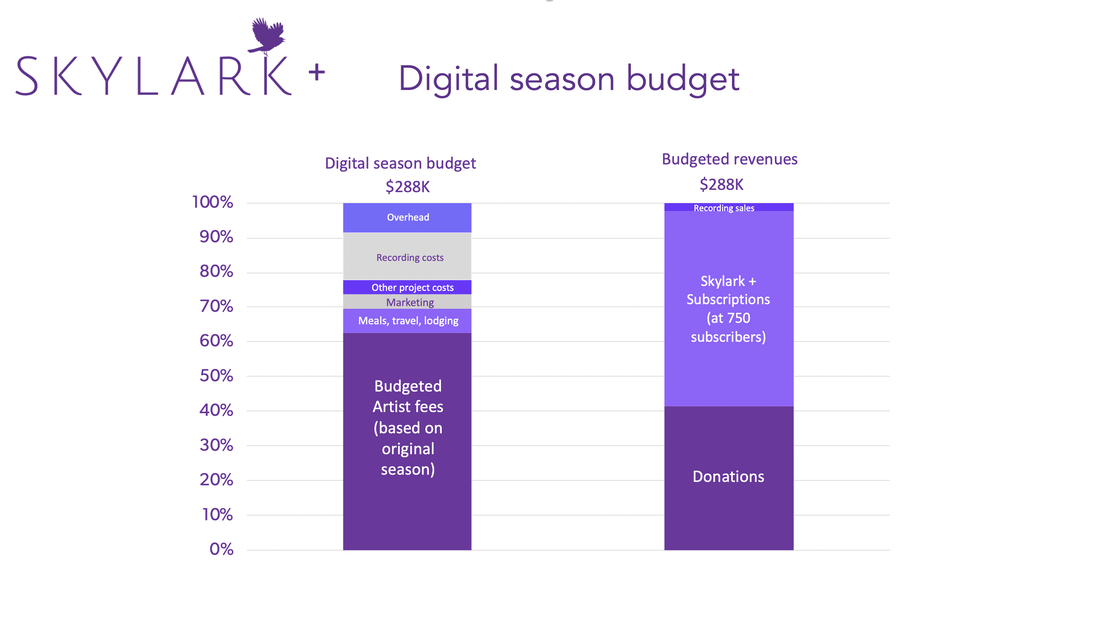
 RSS Feed
RSS Feed

